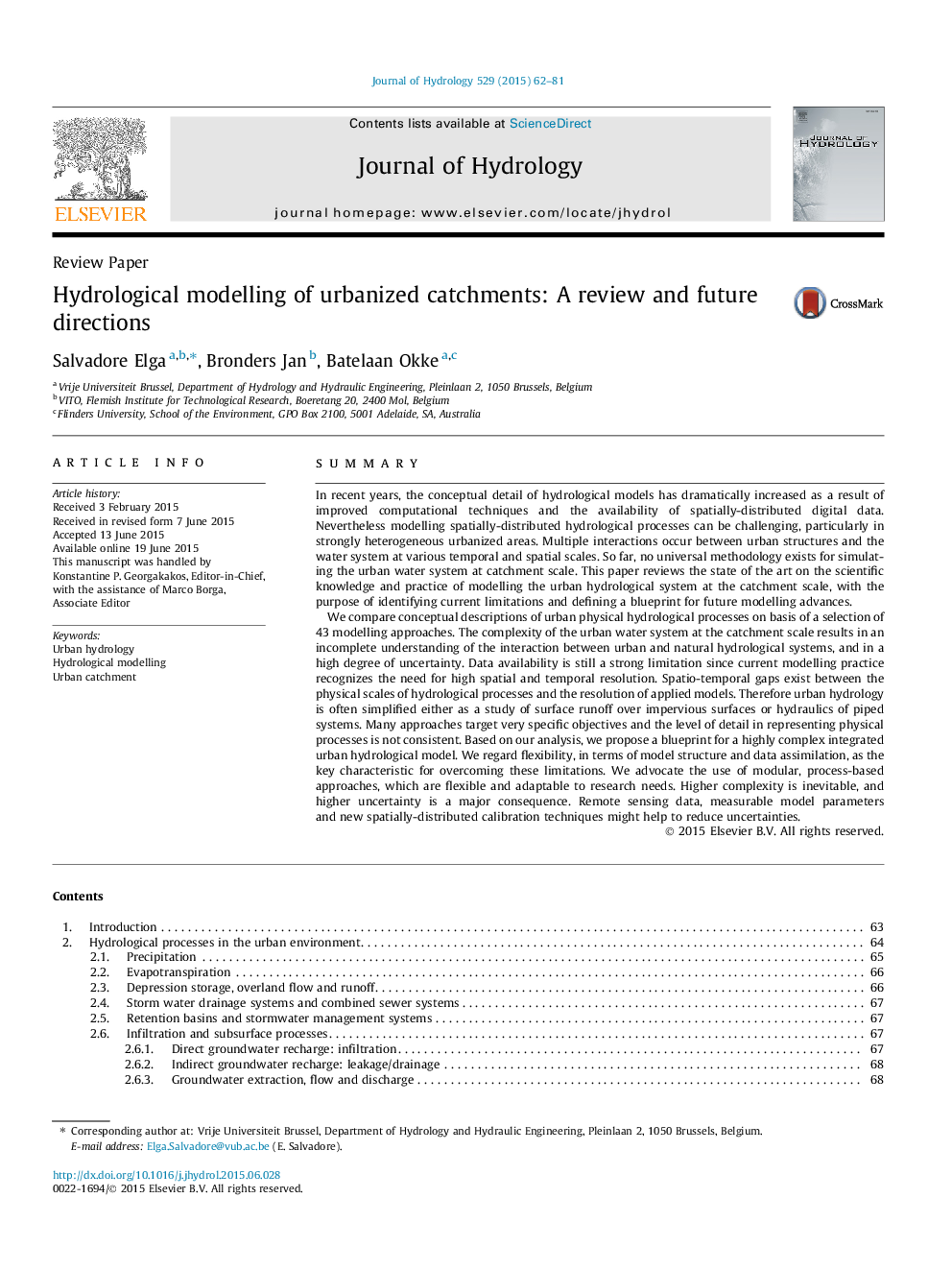| کد مقاله | کد نشریه | سال انتشار | مقاله انگلیسی | نسخه تمام متن |
|---|---|---|---|---|
| 6410974 | 1332887 | 2015 | 20 صفحه PDF | دانلود رایگان |
- State of the art in urban hydrological modelling at the catchment scale.
- In-depth analysis of 43 modelling approaches.
- Spatio-temporal gaps exist between physical process scales and model resolutions.
- Blueprint for future developments in urban-catchment hydrological modelling.
- Flexibility is one of the most desirable characteristic for urban hydrological models.
SummaryIn recent years, the conceptual detail of hydrological models has dramatically increased as a result of improved computational techniques and the availability of spatially-distributed digital data. Nevertheless modelling spatially-distributed hydrological processes can be challenging, particularly in strongly heterogeneous urbanized areas. Multiple interactions occur between urban structures and the water system at various temporal and spatial scales. So far, no universal methodology exists for simulating the urban water system at catchment scale. This paper reviews the state of the art on the scientific knowledge and practice of modelling the urban hydrological system at the catchment scale, with the purpose of identifying current limitations and defining a blueprint for future modelling advances.We compare conceptual descriptions of urban physical hydrological processes on basis of a selection of 43 modelling approaches. The complexity of the urban water system at the catchment scale results in an incomplete understanding of the interaction between urban and natural hydrological systems, and in a high degree of uncertainty. Data availability is still a strong limitation since current modelling practice recognizes the need for high spatial and temporal resolution. Spatio-temporal gaps exist between the physical scales of hydrological processes and the resolution of applied models. Therefore urban hydrology is often simplified either as a study of surface runoff over impervious surfaces or hydraulics of piped systems. Many approaches target very specific objectives and the level of detail in representing physical processes is not consistent. Based on our analysis, we propose a blueprint for a highly complex integrated urban hydrological model. We regard flexibility, in terms of model structure and data assimilation, as the key characteristic for overcoming these limitations. We advocate the use of modular, process-based approaches, which are flexible and adaptable to research needs. Higher complexity is inevitable, and higher uncertainty is a major consequence. Remote sensing data, measurable model parameters and new spatially-distributed calibration techniques might help to reduce uncertainties.
Journal: Journal of Hydrology - Volume 529, Part 1, October 2015, Pages 62-81
